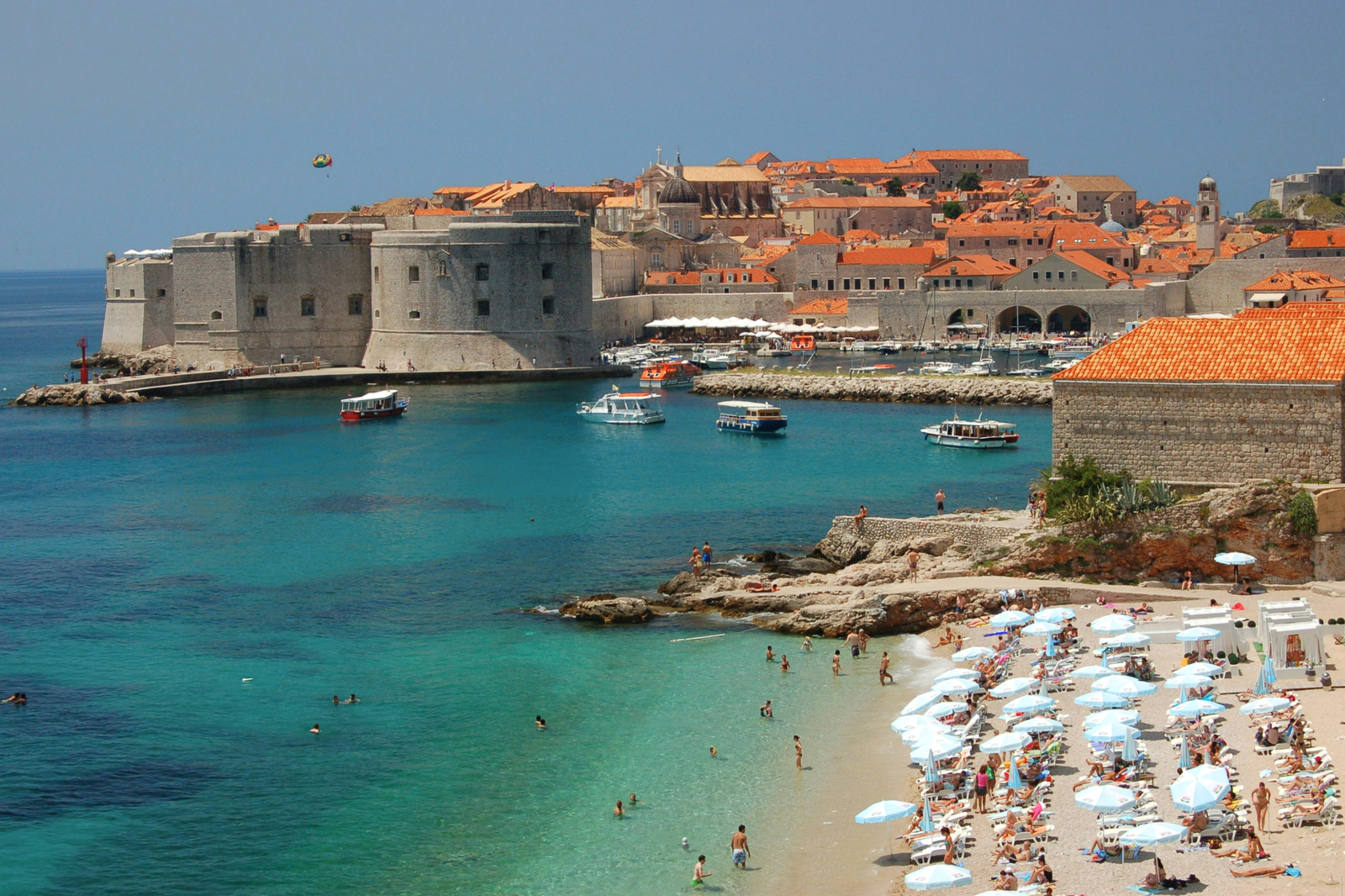

Croatia vacation guide – Ultimate travel guide to Croatia 2025 – a trip to remember
One cannot help but marvel at the sheer beauty of Croatia, a country that boasts an abundance of offerings for its visitors. Picture this – thousands of miles of deep blue coastline hugging over a thousand islands, surrounded by dramatic mountains that add that extra touch of magic. Croatia is a destination that transcends the ordinary. The promise of balmy summer weather combines not just with the picturesque pebble beaches, but with a historical tapestry that weaves through time.
This Croatia travel guide will take you through the essentials to know when planning a trip to this enchanting country in 2025, alongside an itinerary that travels through the most popular destinations – with honest recommendations of our favourite restaurants, hotels, and attractions throughout.
TABLE OF CONTENTS

Where is Croatia?
Croatia has continued to gain interest as an alternative to more well-known European travel destinations like France or Italy, but for those less acquainted with Europe, it might not be 100% clear where Croatia actually is! Geographically, it lies just opposite Italy, separated by the Adriatic Sea. Croatia is situated at the crossroads of Central Europe and the Mediterranean, sharing its borders with Slovenia to the west, Hungary to the north, Serbia to the east, and Bosnia and Herzegovina to the south.
Time zone in Croatia
Croatia is situated in the Central European Time Zone (CET), which puts it one hour ahead of GMT (Greenwich Mean Time) and two hours ahead during daylight saving time observed from March to October. If you're traveling from distant locations such as the US or Australia, jet lag is likely, so it's advisable to allocate a day or two in your itinerary to adjust.
Language in Croatia
The official language is Croatian, but many people speak English, especially in tourist areas. You may also hear Italian and German spoken in some parts of the country.
Even though most Croatians speak some English, learning a few words goes a long way and can really be appreciated by locals. We recommend this guide for having a few basic Croatian phrases in your back pocket, just in case.
Croatia visa requirements
As of 1 January 2023, Croatia is part of the free-traveling Schengen area. Visitors from the EU, US, UK, Canada, Australia, and New Zealand therefore do not need a visa to enter Croatia for up to 90 days within a 180-day period. If you have a valid Schengen visa, you don’t need a separate visa to visit Croatia and vice versa. However, it's always a good idea to check the latest visa requirements before your trip.
When crossing into and out of non-EU and non-Schengen countries, you’ll still need to show your documents at the border, and vice versa. These include Bosnia & Herzegovina, Serbia, and Montenegro.

EU citizens, as well as members of the European Free Trade Association (EFTA) – that’s Iceland, Liechtenstein, Norway and Switzerland – can use an ID card at the border instead of a passport. People outside the EU and EFTA must have a passport less than ten years old, and valid for at least three months beyond the planned departure from Croatia.
If you hold a valid Schengen visa, as well as visas for Cyprus, Romania, and Bulgaria, you can enter Croatia without a separate visa.
Some nationalities, including those from China, India, Pakistan, Russia, Turkey, and South Africa, do require visas to enter Croatia. For those from these non-visa-exempt countries, obtaining a Schengen visa is necessary before travel, and the application process involves completing an online form on the Croatia Ministry of Foreign Affairs Website and submitting it with required documents to the nearest Croatian embassy/consulate or an accredited travel agency.
Long-stay visas are necessary for stays exceeding 90 days, and all third-country nationals must register their arrival either at their accommodation provider or with the local police within specified time frames.
Ready, set, explore: travel guide for getting to Croatia
So, now Croatia is on your travel radar, let's break down the options of how you can actually get there. Whether you're arriving from Europe, overseas, or even considering a sea voyage, we've got you covered.
We'll take a moment here for a top-down look at the different ways to get into and around the country.
Air travel to Croatia
Croatia has a network of international airports with the major hubs of Zagreb, Split, Dubrovnik, Zadar, and Pula dominating the scene. However, don't overlook the possibility of lesser-known airports such as Rijeka, Osijek, and Brač, with many airlines offering direct international flights, particularly from April through September. If your journey starts from the United States, Australia, or other far-flung destinations, be prepared for one or two layovers. However, Croatia does have some direct flights from places like New York to Dubrovnik, so you can go from the Big Apple to the land of Game of Thrones in less than 9 hours.

Croatia travel by car – a trip of greens and blues
Most Europeans embrace the freedom of the open road with a road trip into Croatia, which offers the most flexibility and convenience. Whether driving your own car or a rental, Croatia has a well-developed highway infrastructure, crossing all four corners of the country, and a network of national toll-free roads running parallel to the toll motorway. All roads are asphalted and wide enough, with clear road signs. Remember, if you bring a foreign-registered vehicle, ensure you have valid international motor vehicle insurance.
Train travel – for the slow itinerary
For those with a penchant for unhurried exploration and panoramic views, consider the train. Croatia’s railways, run by HŽ, are currently pretty dilapidated and slow, but there is a light at the end of the tunnel (couldn’t help ourselves!): in partnership with the European Union, Croatia is investing a massive four billion euro in overhauling its rail network over the coming years. Even now, international rail lines tend to run more comfortable and timely trains. Daily connections with neighboring countries like Slovenia, Hungary, Austria, Switzerland, Germany, and Serbia offer a leisurely journey through captivating landscapes if you’re not in a rush – although train connections within Croatia can be quite limited.
Bus travel – an option for your first trip
You can also get into Croatia from neighbouring European countries by bus. We recommend FlixBus, which has a pretty well-developed route network connecting European cities with Croatia. From our experience, the buses are usually comfortable enough and air-conditioned. We recommend paying the bit extra for the panoramic seats upfront.
Sea travel
Croatia welcomes seafarers with open arms. Year-round ports like Umag, Poreč, Rovinj, Pula, Rijeka, Zadar, Šibenik, Split, Dubrovnik, and more are at your disposal. Seasonal ports, operational from April to October, include ACI marina Umag, Novigrad (Istra), Sali, and others.
International car ferry lines, operated by Jadrolinija, include routes like Zadar to Ancona, Split to Ancona, and Dubrovnik to Bari – all connecting Croatia and Italy. You can book your tickets online, but be aware that tickets cannot be booked too far in advance before the schedule for the upcoming season is released.

Faster passenger ferries (catamarans), operated by Venezia Lines, connect Italy to Croatia’s Istrian Peninsula. Their seasonal service runs from the last week of April to the first week of October, from Venice to Pula, Porec, Rovinj, and Umag in Croatia – as well as Piran in Slovenia. In July and August, the service runs daily and is the fastest way to cross between Croatia and Italy if you are without a vehicle.
Be very careful not to confuse the ferry times – it holds the number two spot in the Five Most Common Mistakes That Ruin A Croatia Vacation.
Croatia travel guide – getting around
By car
Once you’re in the country, we recommend traveling around Croatia by car – no other method affords you such flexibility on your own terms. Make the journey to your first accommodation an exploration of itself by getting off the beaten track and passing through the small countryside villages.
It’s hard to know exactly when you will fall in love with Croatia, but it might just be in one of those unexpected places. Perhaps it’ll be during a meal of fresh seafood topped with fresh, local olive oil, enjoyed in a tavern with a view to die for. Or maybe it’ll be during a spontaneous wander through a hilltop village when you chance upon a cute coffee bar and are welcomed with the best espresso you’ve ever tasted. Wherever your love affair with Croatia might start, it probably won’t be exactly where you plan it.
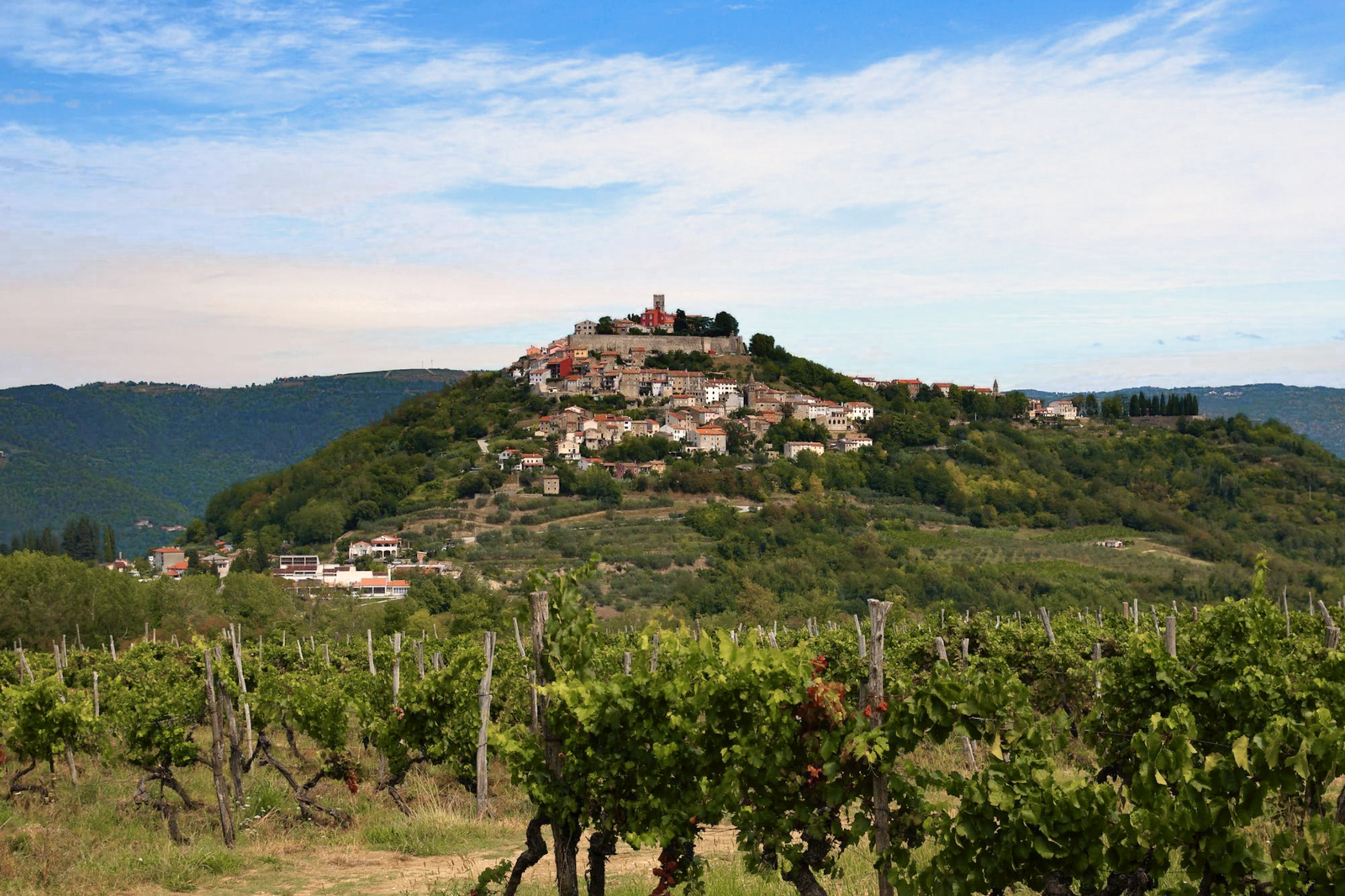
By bus
If you cannot bring or rent a car, buses are another option for traveling through Croatia. FlixBus is modern and fast, and has a well-developed network of city connections throughout Croatia – the exception being throughout Istria and of course on the islands.
In larger towns, reliable and efficient public transportation is available. Split, Rijeka, Zadar, Pula, and Dubrovnik use city buses, while Zagreb boasts an extensive network of electric trams and buses. This public transportation is often used by locals as the most affordable option for getting around. You can also check with a local bus station once you’re there – we recommend heading there in-person to avoid any language barriers or misunderstandings that might happen over the phone.
By taxi/Uber
Jumping in a taxi is almost guaranteed to be more expensive than a trip with a modern taxi app such as Uber. But if you do need the immediate availability of a roadside taxi, just make sure to confirm the price with your driver before you set off to make sure it’s reasonable (you can always use the price shown on the Uber app as a benchmark).
Uber has operated in Croatia’s biggest cities like Zagreb, Dubrovnik, Split, and Zadar since 2015. Your trip cost can fluctuate depending on your location and the time of your journey, and naturally prices increase with demand in July and August. But generally, Uber fares are much more affordable than traditional taxis. Additionally, because your destination and route are set in the app, the chances for misunderstandings due to language barriers are minimized. Plus, Uber allows you to see the fare upfront, so you know exactly how much your ride will cost.
By sea
For reaching the islands, ferries and catamarans remain the primary option, with the second option being private speedboat transfer. Major ferry ports like Rijeka, Zadar, and Split, as well as smaller coastal towns such as Brsecine, Makarska, Drvenik, Orebic, Ploce, and Prapratno, facilitate transport to the islands. Jadrolinija, Croatia's largest ferry operator, covers most car ferry routes (FYI – you don’t need to have a car to jump on a car ferry!) Krilo has a fleet of fast passenger-only catamarans that connect major hubs like Split, Dubrovnik, and Zadar with the islands.
Climate and weather in Croatia
We have to make the distinction between the climate on Croatia’s coast to what you’ll experience inland. Coastal Croatia has a Mediterranean climate, with hot summers and mild winters. Summers can be quite hot – to say the least – so be prepared. Average summer temperatures range from the mid-to-high 20s°C/77-86°F – but in more recent reality, daytime temperatures often surpass these averages, reaching into the 30s°C/high 80s or low 90s°F for at least half of the peak summer period. Weather along the south coastal region of Dalmatia is generally drier and sunnier than in the northern Adriatic region of Istria, with daily temperatures differing regularly up to 5°C/40°F.

Coastal winters are comparatively mild, seldom dropping below 5°C/41°F, with occasional instances of snow in select regions. Autumn extends the warmer climate, and despite occasional rain, sunny days persist. The average coastal sea temperature varies from 25°C/77°F in summer to 12°C/54°F in winter.
Moving inland, Croatia's interior experiences a continental climate. Winters are notably cold, frequently falling below 0°C/32°F, accompanied by significant snowfall. Summers, on the other hand, like the coastal areas, can be uncomfortably hot, with temperatures frequently reaching the mid to high 30s°C/high 80s or low 90s°F. Fortunately, air-conditioning is a common feature in accommodations, eateries, and public spaces, providing welcome relief during those warmer months.
When to go
The high season in Croatia extends from mid-June to mid-September, with the peak travel period occurring in the last week of July and the first two weeks of August. This peak summer period is marked by high temperatures, a vibrant atmosphere, and crowded attractions.
Our personal favourite time of year is during the shoulder season: May and the first half of June, all of September, and the first half of October. During these periods, there are fewer crowds, no queues, and more affordable prices. It’s the perfect time for outdoor activities such as cycling and hiking. Be sure to check out our guide to sport and outdoor activities on Hvar, a part of Croatia’s offering so often overlooked.
In the shoulder season, the weather remains warm and sunny, and the sea is still suitable for swimming and watersports. It's noted that the sea is generally warmer in September than in June. Travelers are advised to be mindful of German and Austrian tourists, especially during their school holidays, as this can impact crowd levels and accommodation prices.
Croatia in winter is calm, cold, and utterly charming. The period between November and April sees the fewest visitors due to freezing temperatures inland and the Bura wind affecting the coast. Despite the weather challenges, it's an opportune time for those interested in food and culture, with lower accommodation rates and a chance to explore galleries and backstreets with locals. In November, while temperatures can still be pleasant, coastal businesses are likely to be closed. December brings cold weather and further closures, but it's a unique time to experience local life in the bigger cities, with open wine bars and galleries.
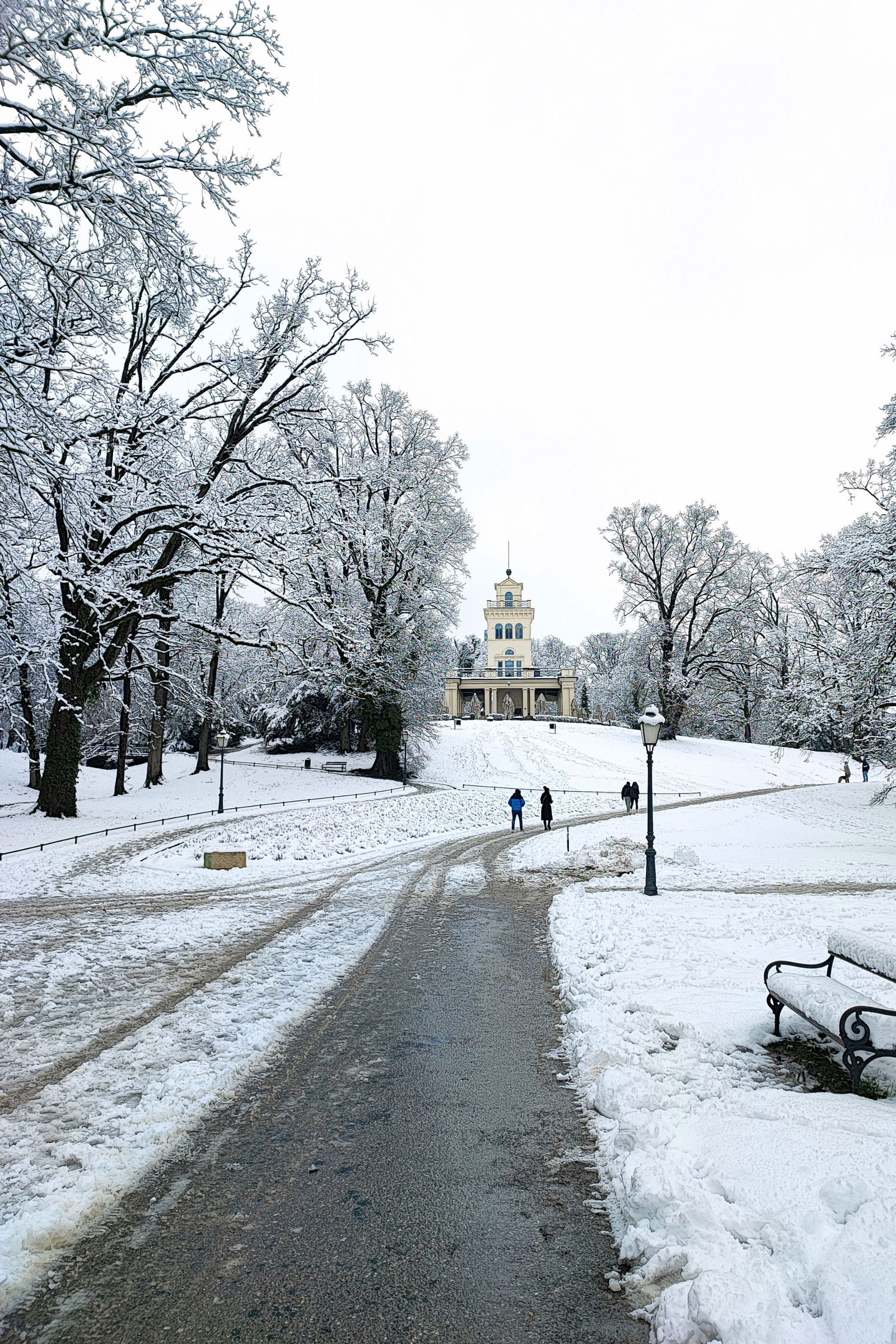
A winter’s day at Zagreb’s Maksimir Park
January remains chilly, making it ideal for indoor activities like exploring Zagreb's cafes and museums, or skiing near Zagreb and Rijeka. February sees longer days but few tourists, discounted accommodations, and intriguing coastal tours. March offers a good mix of indoor and outdoor activities with improving weather, and April, while the sea is still cool, showcases blossoming trees and cultural events like Easter parades and music festivals.
Money in Croatia
Currency
Croatia's official currency as of January 2023 is the euro (€).
Cash or card
Cards are not accepted everywhere, particularly in smaller towns or at local establishments like cafe bars or restaurants – so it's a good idea to withdraw some cash from an ATM before and/or during your trip, or exchange your home currency for some euros.
When withdrawing money from ATMs in Croatia, it is advisable to use official bank ATMs, identifiable by signs of banks such as Zagrebacka Banka, PBZ, OTP, Erste, or Addiko Bank. There will be a small fee for using any such ATM, and make sure to select “pay in local currency” when prompted by the ATM, or risk unfavorable exchange rates set by the ATM bank. In heavily touristed areas, you will likely see alternative options like Euronet (blue and yellow) or Auro Domus (yellow and black) ATM. While these non-bank ATMs can offer greater convenience due to their prominent locations, they tend to be more expensive.
Many exchange offices (mjenjačnice) and newsstands (look out for ”Tisaks”) claim a ”no commission policy”, but they set their own exchange rates, which can vary widely. While they may not charge a traditional commission, it's important to be aware of potential rate discrepancies. To get the best value, it is advised to shop around for the most favorable exchange rate. In our experience, official banks will often provide the best rates.
Since moving to Croatia, we have always used Wise and can’t speak highly enough of the easy-to-use app and low, transparent fees. We can load up any currency to our Wise account and convert it in seconds to euros, which we can then use freely with our debit card in Croatia, and all throughout Europe!
Is Croatia expensive?
It can become expensive if you choose to stay exclusively in major tourist hubs and travel during the peak summer season. Hvar, for example, with its sense of understated glitz and heritage glamor – a favourite destination amongst celebrities – does not shout about its affordability for budget travelers. However, significant savings are possible if you opt to visit during the shoulder seasons, explore less crowded areas, and select small, family-operated eateries. Cooking at home, if your accommodation has a kitchen, presents another cost-saving opportunity.
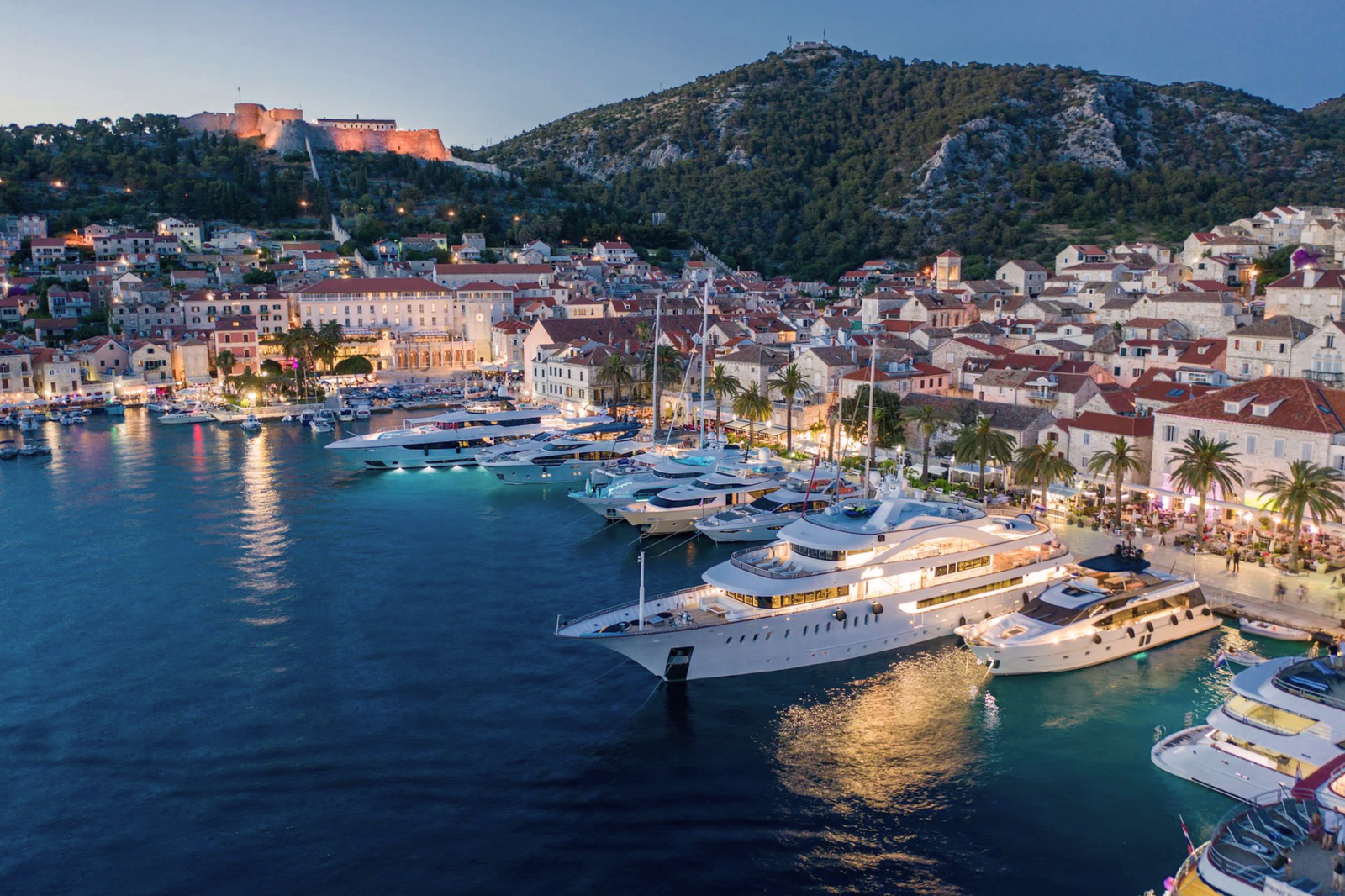
Budget friendly are not the first words that come to mind when thinking of Hvar Town
VAT in Croatia
In Croatia, VAT is called PDV and the rate is 25% for most products and services. An exception is short-term holiday accommodation, which is charged at a lower rate of 13%. Foreigners without permanent or temporary residence in Croatia can request a tax refund for purchases over €100. To do so, request a tax-free form at the time of purchase, fill it out, and have it stamped by the salesperson. Get it stamped again at the airport or border within six months of purchase, and mail it back to the original shop for the VAT return. Alternatively, seek out shops part of the Global Blue Tax-Free service, follow a similar procedure, and obtain a quicker refund at the airport in Global Blue's office.
Tipping in Croatia
Tipping is not mandatory in Croatia, but it is appreciated for good service. Locals often just round up to the nearest euro. A tip of 10% is usually sufficient in restaurants if you are satisfied with the service.
Cultural customs
Croatians are generally friendly and welcoming to visitors, but it's important to be respectful of their customs and traditions. Dress modestly, especially when visiting churches and other religious sites. Do not walk around within the old city walls in your swimwear. Dispose of trash in appropriate receptacles. Keep noise levels to a reasonable level after nightfall. Fines for tourists in breach of these rules are becoming more and more frequent.
Highlights of Croatia – top destinations for the trip
A frequently asked question for first-time visitors to Croatia is: where should I visit first? Most naturally gravitate toward popular tourist towns and attractions such as Dubrovnik, Split, Plitvice, Hvar (of course), Zagreb, and Plitvice National Park. We’ve mapped out an itinerary below that travels through each of these spotlight destinations, along with our personal recommendations for accommodations, things to do, and places to eat.
Each of Croatia’s top destinations boasts stunning and diverse landscapes, delicious cuisine, and thousands of years of dramatic history. All of these endowments, however, have led to an influx of tourists in recent years. Don’t skip our guidance on Croatia’s two most overrated destinations and where to go instead.
Dubrovnik – a Croatian attraction for the ages
Exploring Dubrovnik
Start your trip in Dubrovnik, a picturesque medieval city in southern Croatia. Walk along the city walls and visit the old town, which is a UNESCO World Heritage Site. Take a cable car to the top of Srd Hill for panoramic views of the city.
You may have heard that Dubrovnik is crowded. In the high season, that is unfortunately spot on. We recommend walking the city in the early morning before the heat and crowds become oppressive. On your stroll, stop by the green market in central Gundulic's square, the heart of Old Town, where you can pick up a healthy snack or a bouquet for your room. Then, make your way up the famous Jesuit Stairs to the atmospheric Cathedral of St. Ignatius to relive a little bit of Dubrovnik’s Baroque heyday.
If you’re a Game of Thrones fan visiting Dubrovnik, you’ll undoubtedly be interested in discovering the iconic filming locations in and around the city. By far, the best way to see the iconic filming spots in Dubrovnik is to take an hour tour on foot with a local guide.
The Rector’s Palace has a great collection of surprising and ornate art objects that will appeal even to those who don’t consider themselves art aficionados. Not only is the museum itself a nice break from the hustle and bustle of the city, but the cafe that sits right next to the Palace, Gradska Kavana Arsenal, is a perfect example of coastal Croatia’s enviable cafe culture. See and be seen while you sip your espresso at a leisurely pace, and keep an eye out for camera crews that frequently film the morning news here.
Wining and dining in Dubrovnik
For casual meals, you can’t beat Trattoria Carmen. This is authentic Dalmatian food served with care at a fair price by the standards of Dubrovnik. Traditionally in coastal Croatia, a light meal is eaten between breakfast and lunch, the Dalmatian brunch known as marenda. Marenda to Dalmatians is what five o'clock tea is to the English; not simply just satisfying a need for food, but a time for closeness and conversation among friends. Top off your early lunch with a scoop of first-rate gelato from nearby Gianni, a tiny ice cream parlor run by a Michelin-rated chef.
Since you’re just getting to know Croatia, you have to spend a little time getting oriented to its world-class wine scene. There’s no better place to do that in Dubrovnik than D'vino, a wine bar with extremely knowledgeable (and unpretentious) staff who specialize in Croatian producers and organic wines.
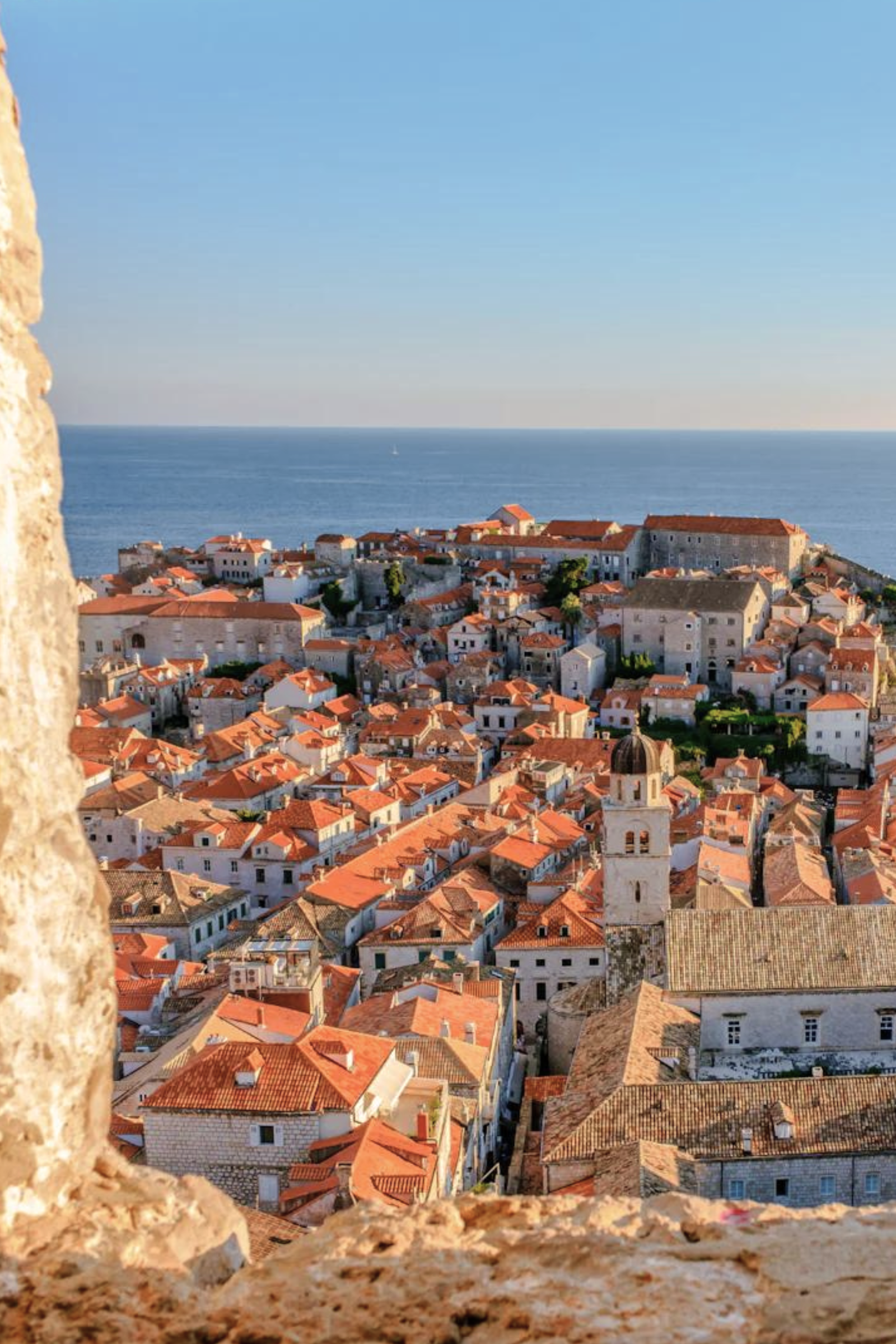
Day trips from Dubrovnik
Once you’ve soaked up the Old Town atmosphere, get some sun and fresh air on Lokrum, a short and inexpensive ferry ride across the harbour. Dotted with ruins and bohemian beach bars, this small island is beloved by locals as a lush escape from the city.
Half an hour south of Dubrovnik, Cavtat is another first-rate day trip. This village is a true gem. Surrounded by sparkling waters, it boasts an incredible house museum dedicated to the Impressionist painter Vlaho Bukovac and a Michelin-starred restaurant, Bugenvila. In a region with some remarkably pretty cemeteries, Cavtat’s is exceptional, featuring an Art Nouveau mausoleum designed by the beloved sculptor Ivan Meštrović.
Also off the beaten path and well worth a visit for culture buffs is the Red History Museum, near Dubrovnik’s main ferry port in Gruž. Its young founders created the museum just a few years ago as a forum to reflect on Croatia’s complicated and contentious Yugoslavian past. A quick tour will challenge what you may think you know about the history of socialism and the Balkans, and undoubtedly add depth and color to the rest of your visit.
Pelješac is also nearby and not nearly as famous as it should be for its incredible oysters, endless vineyards, and Napa-like landscapes. If you make it all the way to the end of this beautiful peninsula, you’ll arrive at Orebić, the jumping off point to Korčula Town, possibly Croatia’s most beautiful island settlement (although it’s ridiculous to even try to choose). While in Orebić, be sure not to miss Croccantino, an outstanding gelateria-pastry shop just out of sight of the ferry port. You can connect to Split from Korčula island, so it’s a scenic alternative to driving up along the more heavily developed Makarska Riviera.
Split
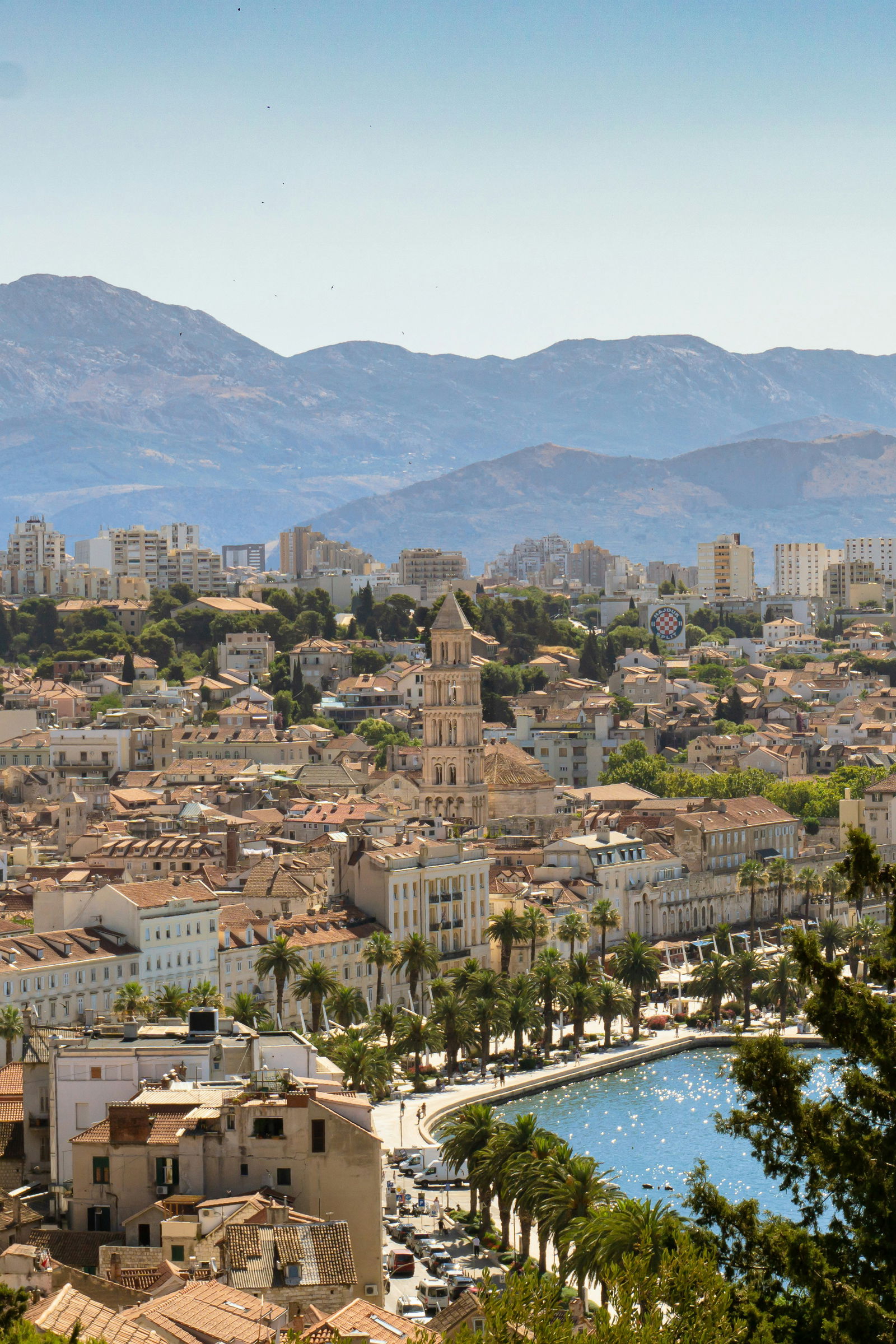
There is so much more to explore in Dubrovnik and other parts of the former Ragusa Republic, but the rest of Croatia awaits you. Travel north to the city of Split. Visit Diocletian's Palace, a Roman imperial seat that was built in the 4th century and is now a bustling part of the city. Take a stroll through the Old Town and the Riva promenade, a lively area with restaurants, cafes, and shops.
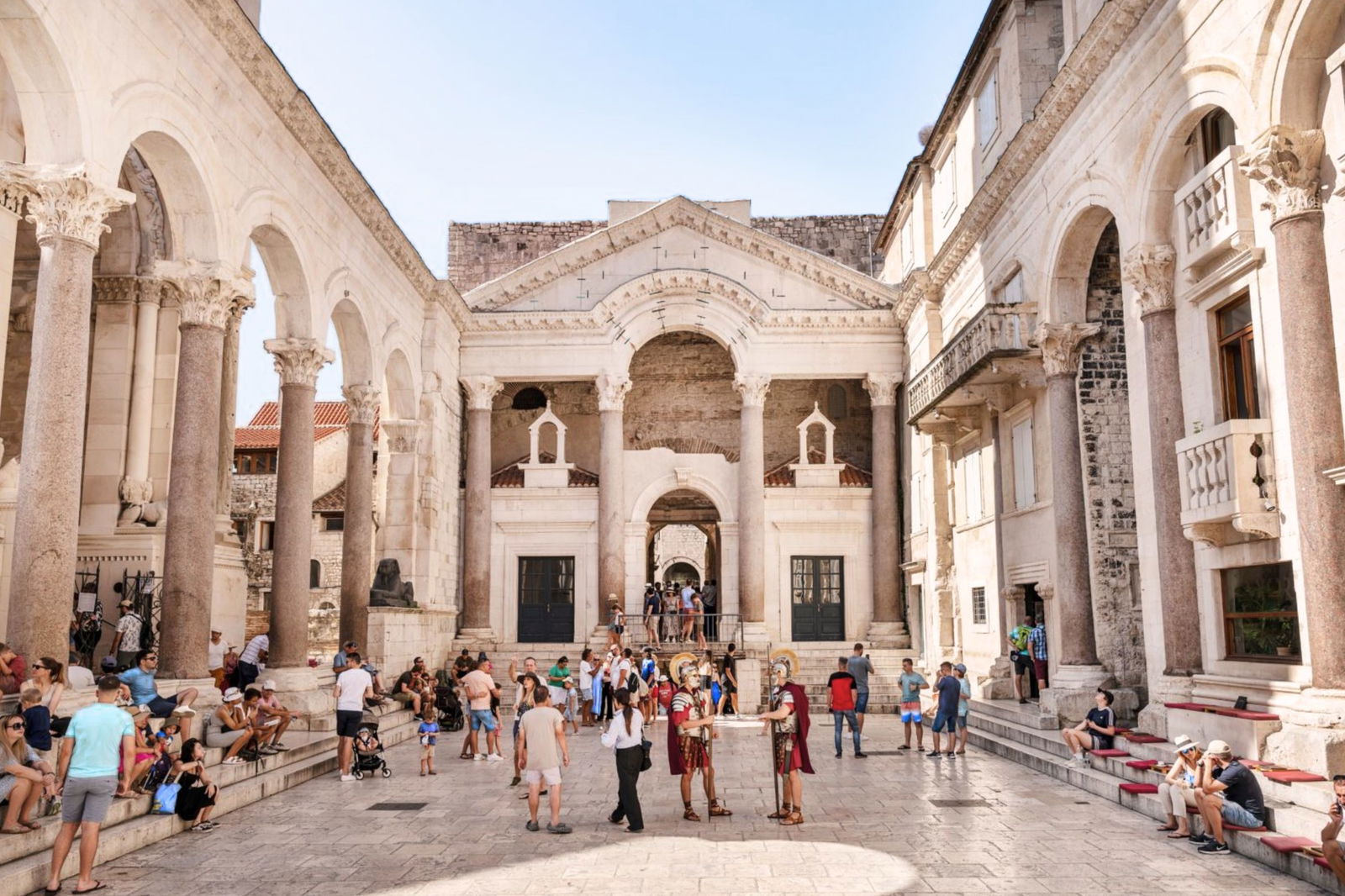
Diocletian's Palace in Split.
Dining in Split
For breakfast, your best bet is Krušćič, offering organic and handmade bread and pastries. Their selection is a great introduction to heritage baking and Dalmatian treats that you won’t find anywhere else. Speaking of organic, Split has several well-curated organic groceries, the largest being Bio&Bio. Of course, the farmer’s market in Split is also something special, carrying on thousands of years of tradition with produce from surrounding villages. Wind your way back through the alleys and side streets of Old Town to D16 for a superb cup of craft coffee or an artisan latte. Pro tip: because cafes in Dalmatia almost never serve food, it is totally acceptable to bring your own snack to nibble on, although you won’t see many other patrons tucking in.
Split has dozens of great restaurants, but the best spot for pizza is undoubtedly Basta on the far side of the Riva, which serves up Neapolitan pies to the beat of a loud top 40 playlist. On the way, you could stop by the swanky new Hotel Ambassador for a drink. Or for something a little quieter, head over to Šug, an award-winning bolthole for traditional but sleek Dalmatian fare. As far as sweets go, you cannot beat the cakes at Oš Kolač, dreamed up and hand-made by the internationally-trained pastry chef Tea Mamut.
Where to stay in Split
Like everywhere in Croatia, Split has a zillion apartments and accommodations to suit a spectrum of tastes and budgets. Of these, Villa Pauletta stands out and has a great location in the lush, serene Marjan district. Among hotels, we recommend the pleasant and professional Cornaro, or Briig, which might be considered as overpriced, but boast airy, contemporary rooms with quality finishes.
Day trips from Split
Fewer travelers make it to Omiš, a small city 30 minutes south of Split, but those who do know that it is worth the trip. For centuries, Omiš played host to pirates who defied their Venetian colonial overlords and would-be Turkish invaders by plundering the Adriatic trade routes. Enter Omiš and you will see why: the spring-fed Cetina river, clear as glass, breaks through the “wall” of the Mostar mountain range here; when larger vessels chased the rebel pirate skiffs, they would run aground on the shallow harbour and become trapped behind the city’s natural sea gate.
Today, visitors can explore the town’s spectacular scenery from its lookout tower and join locals for a re-enactment of the town’s old escapades. A different kind of adventure beckons along the river canyon, which offers rock climbing, white water rafting, ziplining, and other outdoor activities. The town of Omiš is also fun, with excellent beaches, a good choice of restaurants, and a charming historic core. Our personal favourite for sweet treats: Shookolat creperie boasts an impressive pancake menu with over 60 different topping combinations, with sides of ice cream, smoothies, and desserts.
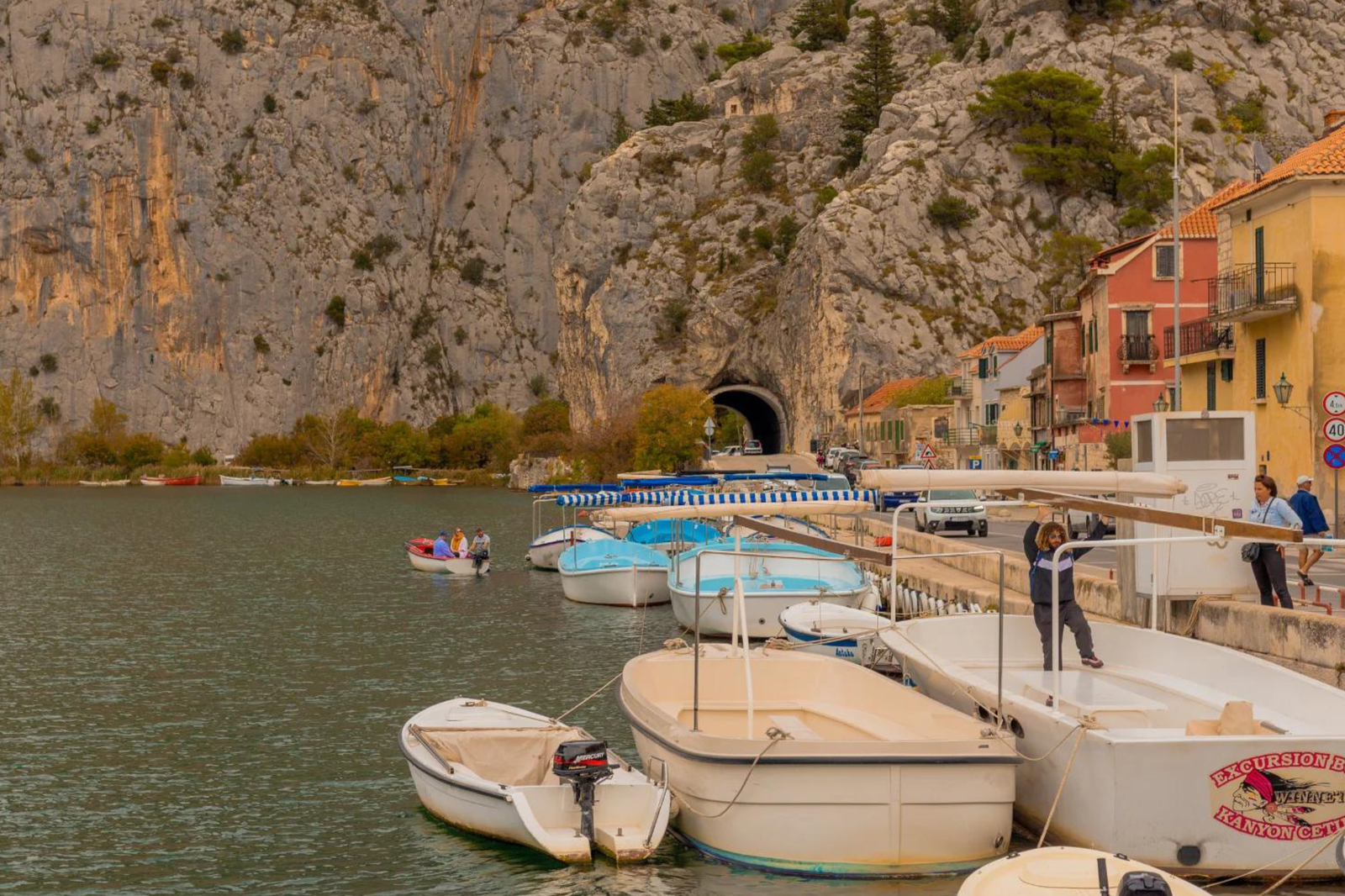
Omiš Harbour
Above Omiš, the rural hinterland begins with a picturesque string of villages called the Poljica Republic, claimed by some to be the first self-governing settlements in medieval Europe. For a jaw-dropping view of Omiš and an equally impressive story of female heroism, drive or hike up to the Mila Gojsalić statue.
Hvar
Take a ferry from Split to the island of Hvar, one of the most popular tourist destinations in Croatia. Enjoy the pristine beaches, swim in the crystal clear waters, visit Hvar's winemakers, and take in the lavender fields. At night, experience the island's famous nightlife in the heart of Hvar Town.
Hvar is a small island, but you could easily spend a month or (like us!) years here. We’ve written a travel journal to put words as to why Hvar is so popular, but there’s still something inarticulable about it.

Where to stay on Hvar
Before you decide where to stay on Hvar, you’ll need to figure out which part of the island best suits you. Hvar island is way more than just Hvar Town! Read our detailed guide to work out where to stay on Hvar to work out where might suit you best.
The island has a number of hotels and countless private apartment rentals, but especially if you are traveling with family or a larger group, we would suggest renting a house or villa. We are biased, of course, but renting an entire house offers so much more privacy, storage, and common space for family hang time at a much lower cost per square meter, especially when you factor in the ability to wash clothes and cook a few meals at home. Take a quick scan of our villas on Hvar.
Going beyond the comfort zone of recognised hospitality brands has become easier in recent years due to platforms like Airbnb, but there is still some risk of the unknown. Don’t skip our guidance on renting a villa on Hvar that will ensure you and your loved ones rent an incredible villa at a fair price when you come to the island.
If you do decide to go the hotel route, Maslina Resort in Stari Grad is the most sophisticated offering by a good margin.
Dining on Hvar
There are so many restaurants on the island of Hvar, we have a dedicated section in each of our local guides for our top restaurant recommendations in the area. Most of them are family businesses run with a lot of pride and hard work, and serve some version of peka (a traditional slow-cooked dish prepared under a heavy iron-cast bell on the fireplace), fish, and grilled meat with potatoes or a simple salad. With so many great options to choose from, it’s hard to go wrong, but here are a few spots that are a cut above the island’s generally high standard.
Dalmatia is still mostly rural, and this restaurant exemplifies the traditional culture that predominates beyond the bright lights of nightclubs and high end resorts. Drive east towards the centre of Hvar island, past where the “good” road ends, and then turn left at the sign for Kod Kućera. You’ll be treated to an unforgettable view over the water to the Mostor mountains. Enjoy an entirely homemade meal, beginning with cheese, salted fish, and prosciutto (pršut), within waving distance of the many happy goats who contributed to it.
People say that driving east on Hvar is like stepping back in time to another world. That is particularly true if your destination is Humac, an abandoned ethno-village that recreates what life was like on Hvar for millennia before the industrial revolution. Konoba Humac offers a delicious menu alongside the unique experience of finding out how dark it really gets when your only light comes from candles.
If you like to combine your feasts with a little footwork, try grabbing lunch at Alavia, perched on top of the island with a breathtaking view of the Adriatic Sea. This was actually the venue of choice for our wedding on Hvar in June 2023, and we take every opportunity we can to sneak another visit to mouth-watering Alavia.
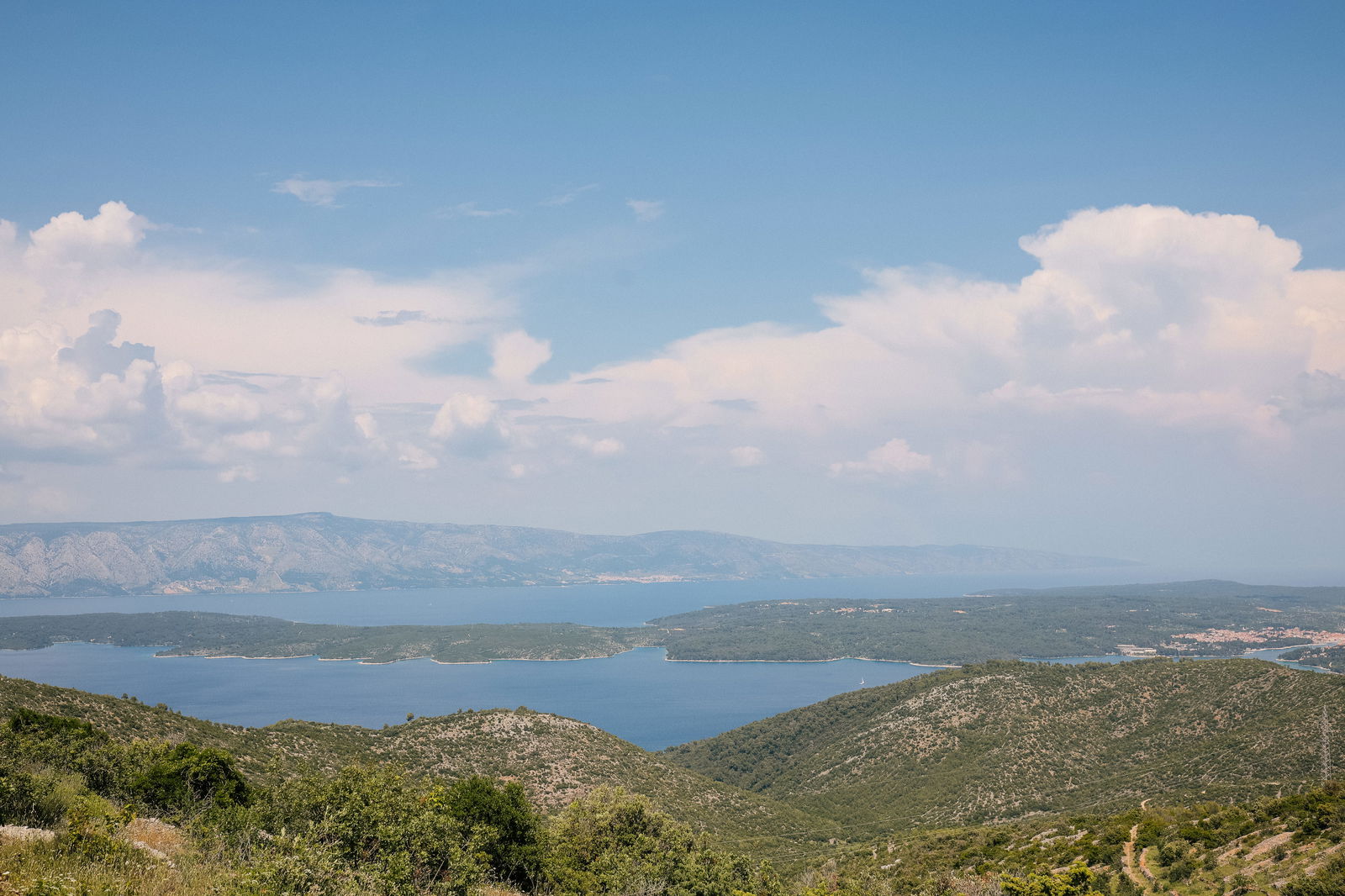
Panoramic vistas from Alavia.
Then hike down to the dreamy town of Velo Grablje, once the largest producer of lavender in Croatia, and onward to Malo Grablje, its sister village, abandoned to atmospheric ruins save for Stori Komen, another first-rate restaurant lovingly restored by a descendant of one of the old families. Finish the evening with a twilight stroll of Milna, a peaceful beach outpost on the sea.
If you’d rather stick a little closer to civilization, Stari Grad has everything you need. Kod Barba Luke serves the best fish on the island – caught locally and ethically, which is unfortunately not to be taken for granted. Nook is a great choice for vegans, vegetarians, and others who might be missing “health food” cuisine. Za Pod Zub is the place to fill your picnic basket with snacks and your suitcase for the folks back home. Finally, Melting Spot offers American/International-style coffee, and Lampedusa's renowned mixologist makes the best cocktails on the island.
Plitvice Lakes National Park
When you finally, reluctantly leave your island paradise on Hvar, travel back to Croatia’s mainland and head inland to Plitvice Lakes National Park, a UNESCO World Heritage Site known for its lakes and waterfalls. A captivating natural wonder, Plitvice boasts 16 interconnected lakes and over 90 waterfalls of various sizes. The water, transitioning from emerald green to aqua blue, is remarkably clear, allowing visibility of small fish. To fully experience the stunning scenery, we recommend spending at least 2 days in the park, with an overnight stay for convenient early access.
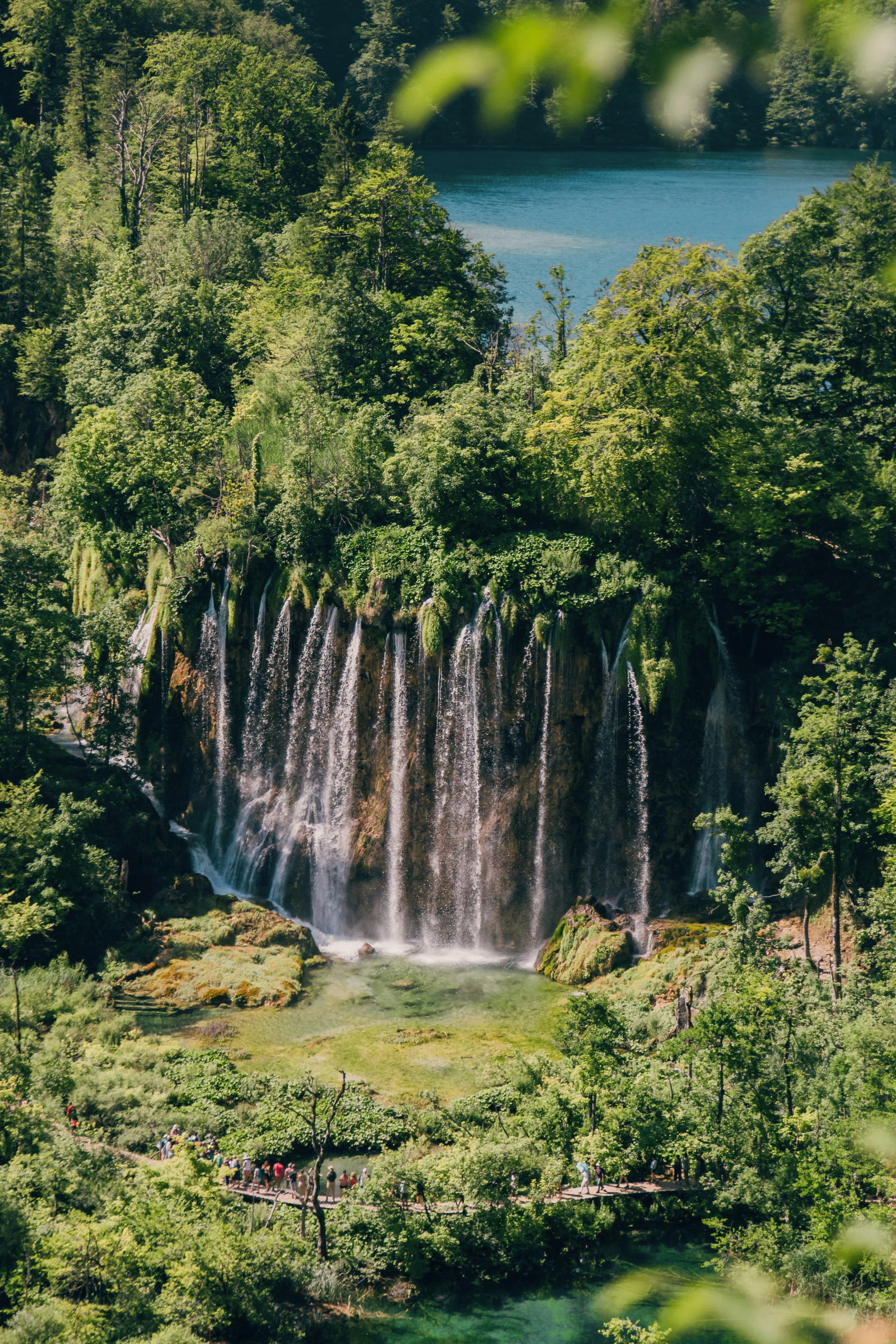
The park offers 8 hiking trails of varying durations and difficulty. Make sure to stay hydrated by bringing an ample water supply and then explore the park at your own comfortable pace. Check informational boards for route guidance, but anticipate the possibility of your journey taking a bit longer than indicated. Opt for an early arrival to avoid crowds, but there is also a noticeable decrease in numbers after 3pm. During summer visits, exercise patience, as some trails are narrow, and there are visitors of all ages with varying paces. There’s strictly no swimming in the lakes themselves, but if a refreshing dip is desired, consider heading to the village of Korana or a bit further north to Slunj for river swimming.
Zagreb
Finish your trip in the capital city of Zagreb. Explore the city's historic Upper Town, visit the Zagreb Cathedral, and take a stroll through the city's parks. Don't miss the Museum of Broken Relationships, a unique, darkly-humored museum that showcases items from failed relationships.

Where to stay in Zagreb
Zagreb has a ton of great Airbnbs, which tend to be affordable compared to rates on the coast, but for us, the only place to stay in Zagreb is the Hotel Esplanade. Here is what Robert Kaplan had to say about the place, in Balkan Ghosts:
“I walked a hundred yards in the rain from the railway station to the Esplanade Hotel: a massive, sea-green edifice that might easily be mistaken for a government ministry, manifesting the luxurious decadence—the delicious gloom—of Edwardian England or fin-de-siecle Vienna. I entered a ribbed, black-and-white marble lobby adorned with gold-framed mirrors, drawn velvet curtains and valences, and purple carpets. The furniture was jet black, and the lampshades were golden yellow. The lobby and dining hall resembled a cluttered art gallery whose pictures recalled the universe of Sigmund Freud, Gustav Klimt, and Oskar Kokoschka: modernist iconography.”
In short, staying at the hotel, with its old-world comforts and timelessly chic dining rooms, is an experience unto itself.
This itinerary gives you a good mix of culture, history, nature, and relaxation. Of course, you can adjust it to fit your interests and time constraints.
Tourist registration
Every visitor in Croatia must be registered via the State’s online portal, and it’s your accommodation provider’s responsibility to do so on your behalf. So don’t be concerned when checking in at hotels, private accommodations including Airbnbs, or campsites that you’re asked to present, and in some cases, temporarily surrender your passport or ID card until the following morning. In fact, it’s more concerning if your accommodation provider does not ask for your ID.
Food and drink in Croatia
Croatia takes great pride in its culinary delights. The cuisine is diverse, featuring fresh, locally sourced ingredients that are both flavorful and satisfying. In the continental parts of Croatia, meat is a staple, whereas coastal regions boast a Mediterranean diet rich in fish, seafood, and verdant vegetables.
As a traveler, it's essential to be aware that dining in touristy restaurants along the coast might lead to misconceptions. These establishments often cater to tourist preferences rather than serving authentic Croatian dishes.
Our must-try authentic Croatian dishes include black risotto (a seafood risotto coloured and flavored with squid ink), pašticada (beef filet marinated in a red wine sauce, served with homemade gnocchi), and gregada (Dalmatian fish stew cooked with white wine, parsley, onions, garlic, capers, salted anchovies, and potatoes).
Tap water in Croatia is safe for consumption, but many visitors still prefer to stick to bottled water, particularly those traveling with kids.
The legal drinking age is 18, and popular alcoholic beverages with locals include house wine, Croatian beer (Ožujsko and Karlovačko are the most popular), and homemade spirits. Drinking commonly occurs at cafe bars, which serve a variety of drinks from coffee to alcoholic beverages. Cafe bars operate throughout the day, starting as early as 6am and typically closing around midnight. Nightclubs, pubs, and some bars extend their hours until 4am during high season.
Is Croatia safe?
We have a dedicated travel journal delving into why Croatia is good for families with kids, and safety is number one. When it comes to peace of mind, Croatia is hard to beat. The U.S. Department of State ranks Croatia as a Level One country – its safest category. According to the 2021 Global Peace Index, Croatia ranks 15th out of 163 countries in terms of overall safety and peace, two spots ahead of Norway and 114 spots ahead of the United States. It is the safest destination in the Mediterranean.
That being said, it's always a good idea to take basic safety precautions, such as keeping an eye on your belongings and avoiding unlit areas at night.
Beaches in Croatia
The glistening Adriatic Sea is no doubt Croatia’s most appealing attraction for visitors. There’s nothing quite like it. The rocky coastline of Croatia features pebble beaches tucked away in coves and bays with crystal clear water, with the Makarska Riviera in central Dalmatia boasting some of Croatia's most beautiful beaches. These beaches are characterized by perfectly round and small pebbles that don't annoyingly stick to you like sand.

Nugal Beach on the Makarska Riviera
Hvar Island’s beaches generally have larger smooth pebbles, which are equally beautiful and provide an even less sticky beach experience! We’ve written extensively about Hvar’s best beaches and tips to keep in mind when visiting the island’s beaches.
Zlatni Rat on Brač Island, also known as Golden Horn or Golden Cape, is a famous paradisiacal landmark spit is one of Croatia' most iconic beaches, again featuring small pebbles and crystal clear water. You will also find a great selection of food stalls and restaurants in the woodland area in the center of the beach. Zlatni Rat can be visited as a day trip from Split or Hvar, or any of the surrounding islands.
While Croatia does have some sandy beaches, they are not as prevalent as in other destinations, so if soft white sand beaches are your thing, maybe Croatia shouldn’t be top of your list.
Plugs and adapters
Croatia operates on a 220V, 50Hz frequency and uses standard European type C & F plugs, both featuring two round prongs with a 19mm gap between them. If your device plugs differ, you will need an adapter to charge or use them. Adapters facilitate the use of your plugs in Croatia, but for voltage transformation, whether from higher to lower or vice versa, converters are necessary.
Internet and roaming charges
Internet in Croatia is widespread, with many cities offering free WiFi hotspots in prominent areas. Most private accommodations, hotels, and campsites also provide free WiFi. However, the broadband internet speed varies across the country, with larger towns having faster and more reliable connections. Croatia ranks 22nd globally for mobile internet download speed but lags at 89th place for fixed broadband. Fortunately, some of our more secluded Hvar Away villas are now equipped with fast Starlink wifi.
Since the summer of 2017, EU roaming surcharges have been eliminated, ensuring that users with EU mobile providers pay the same rates for data, calls, and SMS as they do at home. While roaming data within the EU is free, it is not unlimited, and users should check with their providers regarding data limits. For instance, some providers offer a flat rate for internet data within the EU, but with a specified limit.
While EU roaming is free, charges for roaming in non-EU countries (that includes the UK!) remain high. In Croatia, mobile operators such as A1 and T-Mobile offer packages for unlimited surfing at affordable rates, available for purchase at various locations, including gas stations, newsstands (called Tisaks), and post offices. T-Mobile, also known as HR-Telekom, offers a 7-day unlimited surfing package for 11€, inclusive of nano, micro, or SMS cards.
Trending Journals

Local Guides
Basina
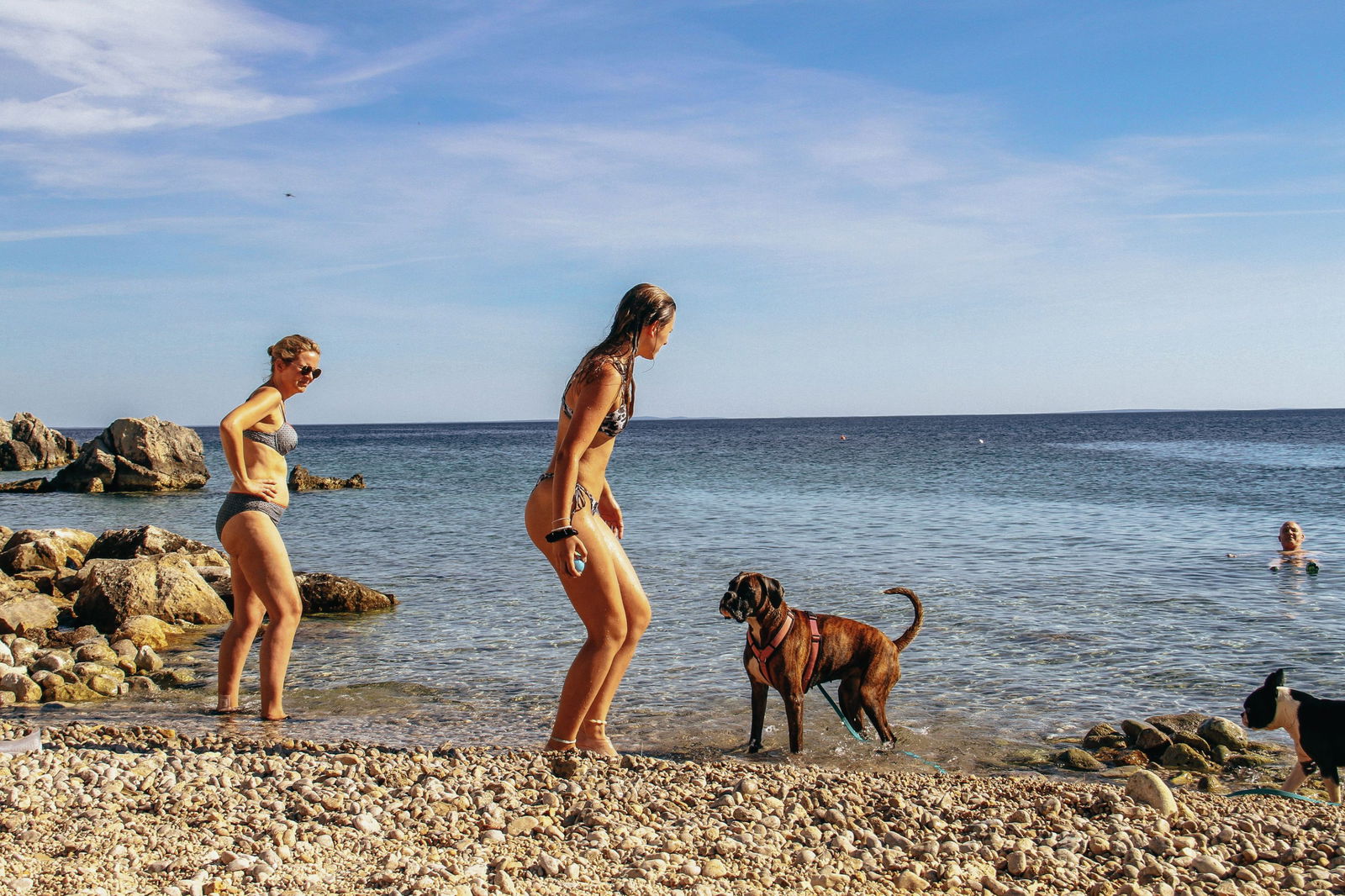
How to & not to
Is Croatia dog-friendly? How to travel with a pet

All About Hvar
Best beaches on Hvar

We’re here to craft your dream Mediterranean villa escape.
Feeling inspired? Talk to our on-island team to make your travel dreams a reality.